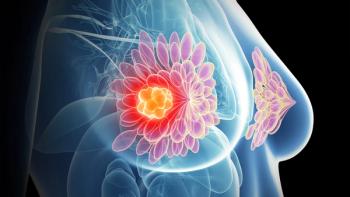
Curative Approach for High-Risk SMM Patients Produces Encouraging Results
A novel approach to the treatment of patients with smoldering multiple myeloma (SMM) produced durable results in a phase II trial.
A curative approach to the treatment of patients with smoldering multiple myeloma (SMM) produced durable results in a phase II trial. These encouraging results were presented at the 2017 American Society for Hematology (ASH) Annual Meeting in Atlanta, Georgia.
A prior phase III study, conducted by the Spanish Myeloma Group, showed that treatment with lenalidomide (Revlimid) and dexamethasone early in a treatment course for patients with SMM, an asymptomatic plasma cell disorder that includes patients with a different risk for progression to multiple myelomas, may significantly improve progression-free survival (PFS).
“This curative approach for high-risk SMM seems to be encouraging,” said Maria-Victoria Mateos, MD, PhD, University Hospital of Salamanca in Spain. She presented results from a single-arm, phase II trial during an oral abstract session Sunday.
The single-arm, phase II trial evaluated a strategy using induction therapy with carfilzomib (Kyprolis), lenalidomide, and dexamethasone followed by high-dose therapy and autologous stem cell transplantation (HDT-ASCT), consolidation therapy and then maintenance therapy with lenalidomide and dexamethasone.
Ninety patients (median age, 59 years) were recruited from June 2015 to June 2017. All patients were at high risk for progression, defined as having a risk of 50% or more at 2 years, according to Mayo (n = 19), Spanish (n = 47) or both (n = 24) risk models.
Seventy-one patients underwent 6 4-week cycles of induction therapy. Patients received 36 mg/m2 carfilzomib twice weekly, 25 mg lenalidomide on days 1 through 21, and 40 mg dexamethasone weekly. Forty-two patients moved on to recieve 200 mg/m2 melphalan followed by ASCT for intensification therapy, and again 3 months later.
Next, 35 patients received two consolidation cycles of carfilzomib, lenalidomide and dexamethasone. Twenty-nine of those patients went to receive maintenance therapy with 10 mg lenalidomide on days 1 through 21, plus 20 mg dexamethasone weekly for up to 2 years.
Flow minimal residual disease (MRD)-negative rate after induction, HDT-ASCT, consolidation, maintenance, and at 3 and 5 years post maintenance served as the primary objective. Secondary endpoints included response rates, time-to-progression, PFS, overall survival, and safety and tolerability.
After a median follow-up of 10 months, PFS and OS were 94% and 98%, respectively, at 28 months.
After induction, all patients achieved an overall response, including 21 stringent complete responses (CRs; 30%), 11 CRs (13%), 27 very good partial responses (VGPRs; 38%), and 12 partial responses (PRs; 17%). Mateos noted that 2 patients achieved CR, but relapsed before the end of induction and one patient withdrew.
In addition, 31% of patients were MRD-negative, an improvement of 26% in the quality of response over treatment. Grade 3/4 adverse events (AEs) included infections (9%), skin rash (8%), neutropenia (4%), and thrombocytopenia (2%). Investigators observed 2 cardiovascular events, 1 grade 1 atrial fibrillation and 1 grade 1 cardiac failure. Two patients reported grade 2 arterial hypertension.
All 42 patients achieved an overall response following HDT-ASCT including 22 stringent CRs (52%), 2 CRs (5%), 12 VGPRs (29%), and 6 PRs (14%). Half of those patients were MRD-negative, an improvement of 47% in the quality of response over treatment. Peripheral blood stem cell collection was successful in all but 1 patient, with a median number of CD34+ cells collected of 6.79 x 106/Kg. Engraftment occurred in all patients, and the median number of CD34+ infused was 3.29 x 106/Kg. No patient discontinued during treatment or in the 100 days post-HDT-ASCT.
All patients who completed the 2 planned consolidation cycles had an overall response, including 24 stringent CRs (69%), 2 CRs (6%), 7 VGPRs (20%), and 2 PRs (6%). Sixty percent of these patients were MRD-negative, an improvement of 62% in the quality of response over treatment. No patients discontinued consolidation. During consolidation, 2 patients developed grade 3/4 neutropenia.
All patients in the maintenance group achieved an overall response, including 24 stringent CRs (83%), 2 CRs (7%), 2 VGPRs (7%), and 1 PR (3%). MRD-negative status was unavailable. No patients discontinued maintenance therapy. Two patients developed grade 3/4 neutropenia.
Overall, treatment-related AEs included pneumoniae (n = 1), respiratory infection (n = 1), infections (n = 2), enterocolitis (n = 1), cutaneous exantema (n = 1), decapited meningitis (n = 1), and massive ischemic stroke (n = 1). Neutropenia, infections and skin rash were the causes for dose reductions in treatment using lenalidomide (n = 19), and dexamethasone (n = 10).
“The safety profile is acceptable,” Mateos said. “And although infections are the most frequent treatment-related AEs, most were mild and manageable.”
Mateos MV, Lopez JM, Rodriguez-Otero P, et al. Curative strategy for high-risk smoldering myeloma (GEM-CESAR): Carfilzomib, lenalidomide and dexamethasone (KRd) as induction followed By HDT-ASCT, consolidation with KRd and maintenance with Rd. Presented at: Annual ASH Meeting and Exposition; Dec. 9-12, 2017; Atlanta. Abstract 402.
Newsletter
Knowledge is power. Don’t miss the most recent breakthroughs in cancer care.













































































